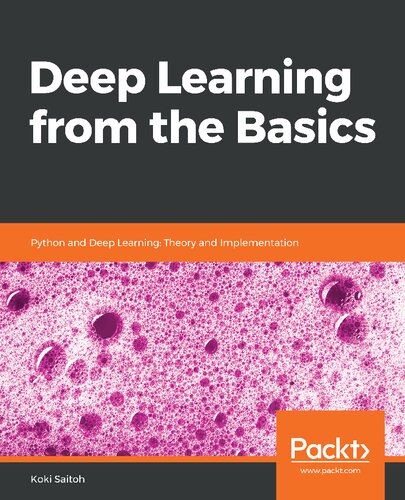

Most ebook files are in PDF format, so you can easily read them using various software such as Foxit Reader or directly on the Google Chrome browser.
Some ebook files are released by publishers in other formats such as .awz, .mobi, .epub, .fb2, etc. You may need to install specific software to read these formats on mobile/PC, such as Calibre.
Please read the tutorial at this link: https://ebookbell.com/faq
We offer FREE conversion to the popular formats you request; however, this may take some time. Therefore, right after payment, please email us, and we will try to provide the service as quickly as possible.
For some exceptional file formats or broken links (if any), please refrain from opening any disputes. Instead, email us first, and we will try to assist within a maximum of 6 hours.
EbookBell Team

4.8
84 reviewsDiscover ways to implement various deep learning algorithms by leveraging Python and other technologies
Key FeaturesDeep learning is rapidly becoming the most preferred way of solving data problems. This is thanks, in part, to its huge variety of mathematical algorithms and their ability to find patterns that are otherwise invisible to us.
Deep Learning from the Basics begins with a fast-paced introduction to deep learning with Python, its definition, characteristics, and applications. You'll learn how to use the Python interpreter and the script files in your applications, and utilize NumPy and Matplotlib in your deep learning models. As you progress through the book, you'll discover backpropagation―an efficient way to calculate the gradients of weight parameters―and study multilayer perceptrons and their limitations, before, finally, implementing a three-layer neural network and calculating multidimensional arrays.
By the end of the book, you'll have the knowledge to apply the relevant technologies in deep learning.
What you will learnDeep Learning from the Basics is designed for data scientists, data analysts, and developers who want to use deep learning techniques to develop efficient solutions. This book is ideal for those who want a deeper understanding as well as an overview of the technologies. Some working knowledge of Python is a must. Knowledge of NumPy and pandas will be beneficial, but not essential.
Table of Contents